This is a specialist pull turning and facing tool. Pulling the brush reduces bristle deflection and negotiates discontinuous geometries such as crossholes. The bristles will break if the brush is pushed. The tool must be pulled in the x-axis away from the main spindle when facing and pulled in the z-axis away from the main spindle when ID or OD deburring.
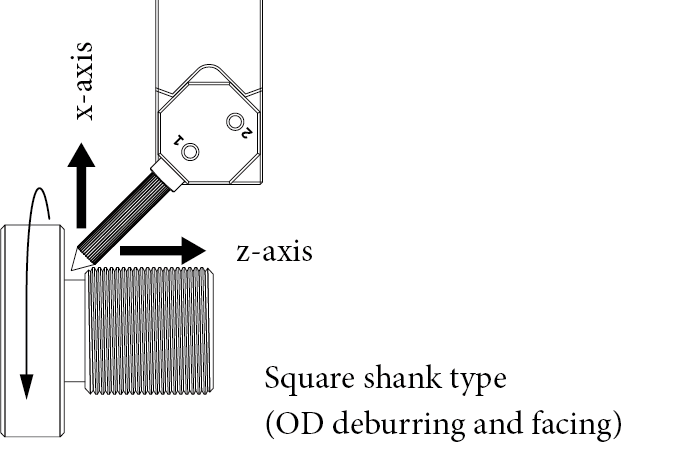
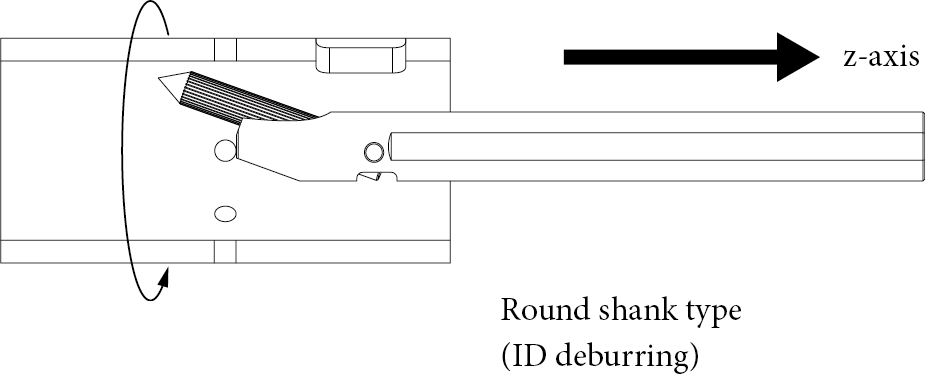
The brush angle of XEBEC Brush Turning Round Shank is fixed at 20 degrees. Maximum depth of cut is 2.0 mm.
Usable bristle length varies with the brush diameter.
| Brush diameter (mm) | Brush angle | Max. usable bristle length |
| Φ2.5 (TB025) | 20 deg. (Fixed) | 3.0 mm |
| Φ6 (TB06) | 5.5 mm |
The square shank has eleven different angles to match the deburring edge. Arrows indicate permissible cutting direction.

The usable bristle length and maximum depth of cut of the square shank vary with the brush angle.
Depth of cut is no more than 2.0 mm. Refer to the following tables for details.
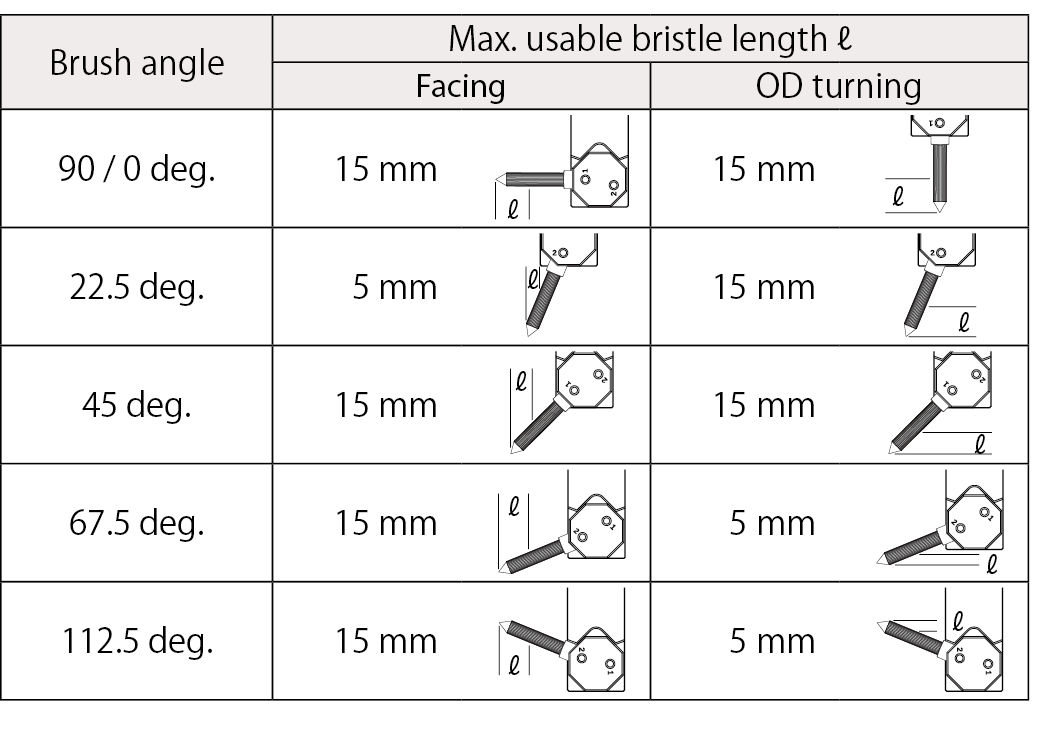
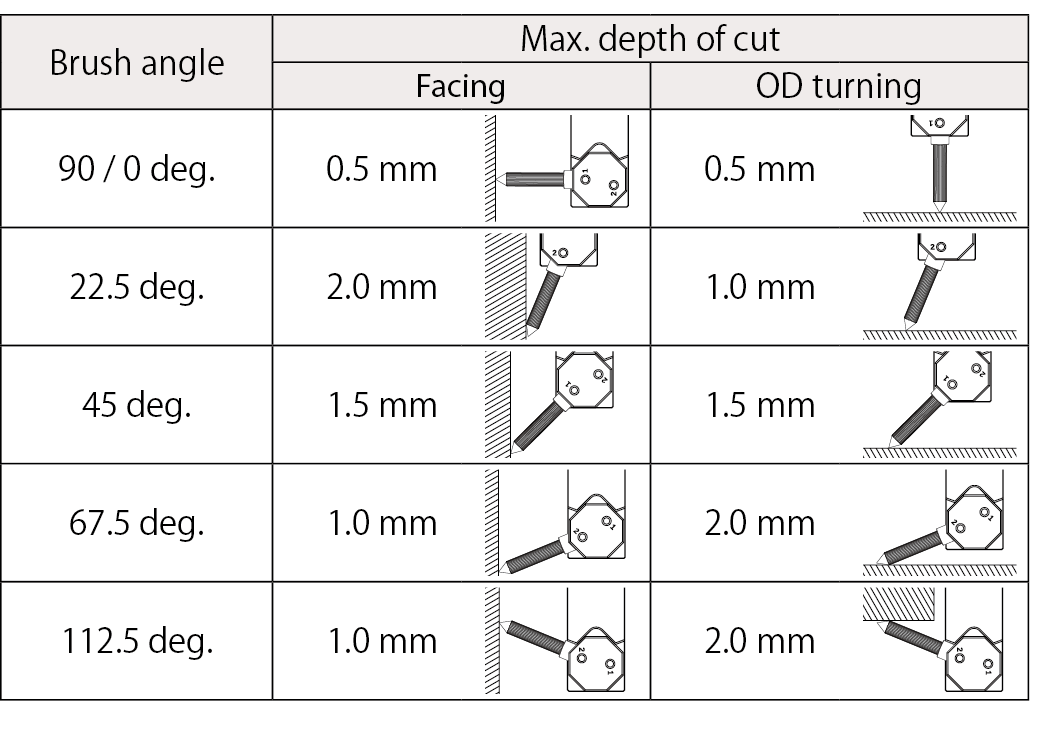
■Refer to “How to Use: External thread deburring mechanism” for brush angle recommendations
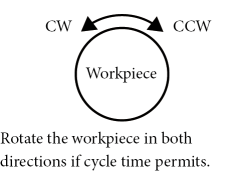
A shallow brush angle and large depth of cut are required to remove burrs on crossholes. The pressure exerted on the brush pushes it into a crosshole, with its tapered tip scraping off burrs as the brush is pulled back and out of the hole. If cycle time permits, the workpiece should be rotated both clockwise (CW) and counter-clockwise (CCW) for uniform edge quality. The maximum crosshole size for the small brush (A11-TB025) is φ3 mm. The bristles of the small brush are stiffer than the larger brush because they are only half the length. This limits the size of crosshole which can be deburred. The large brush (A11-TB06) has no crosshole size restriction.
A steep brush angle is required to remove burrs on an external thread. The recommended brush angle for deburring the crests is 22.5 degrees. This concentrates most of the grinding power in the tip of the brush, while preventing bristles from being deflected on either side of a crest. Spreading and deflection of the brush results in a loss of grinding power and should be avoided.

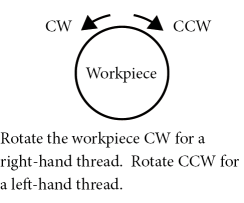
The workpiece should be rotated clockwise (CW) for a right-hand thread and counterclockwise (CCW) for a left-hand thread. If the correct rotational direction and brush angle (22.5 deg.) are used, the brush can be pulled easily along the thread. However, the angled brush will catch on the thread and break if the incorrect rotational direction is used.

■ Micro fine burrs have a burr height ≤ 0.01 mm.

■ Refer to “How to Use: External thread deburring mechanism” for brush angle recommendations.
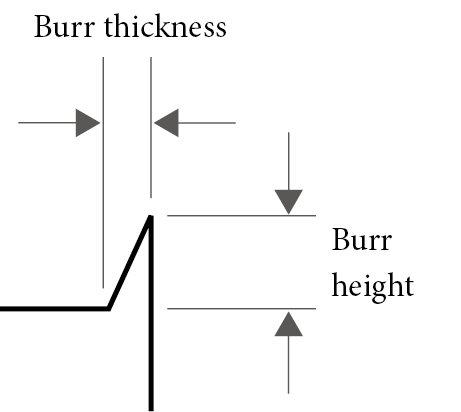
Maximum burr thickness is 0.1 mm. Burrs this size can be easily bent by fingernail.
| Parameter | Range (same for all sizes) | Starting parameters (same for all sizes) |
| Cutting speed (m/min) | 60 – 250 | 150 |
| Feed (mm/rev) | 0.1 – 0.5 | 0.3 |
| Depth of cut (mm) | 0.5 – 2.0 | 1.0 (continuous cutting surface) |
| 0.5 (discontinuous cutting surface) |
■Use on large burrs will greatly increase brush wear and shorten tool life.
■Starting parameters vary depending on the brush angle of the square shank. Refer to the manual for details.

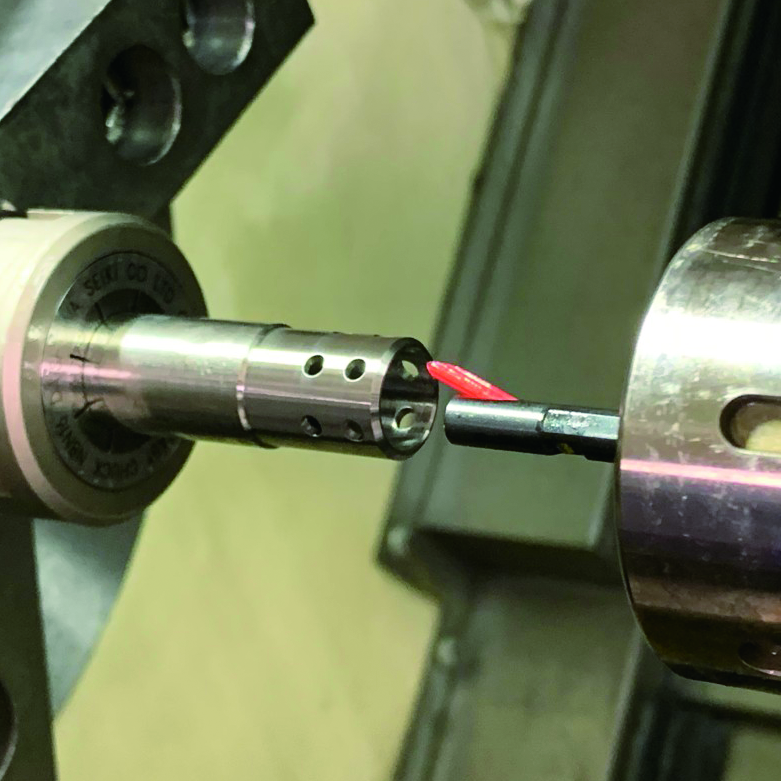
| Workpiece material: | Carbon steel |
| Main bore diameter: | Outer 16 mm, Inner 12 mm |
| Crosshole diameter: | 3 mm |
| Brush (color) |
Holder | Angle (deg.) |
Dept of cut(mm) | Cutting speed (m/min) |
Feed rate (mm/rev) |
Rotational direction |
| A11-TB025 (red) | TM-SH-06 | 20 (Fixed) | 1.5 | 150 | 0.1 | CW + CCW |
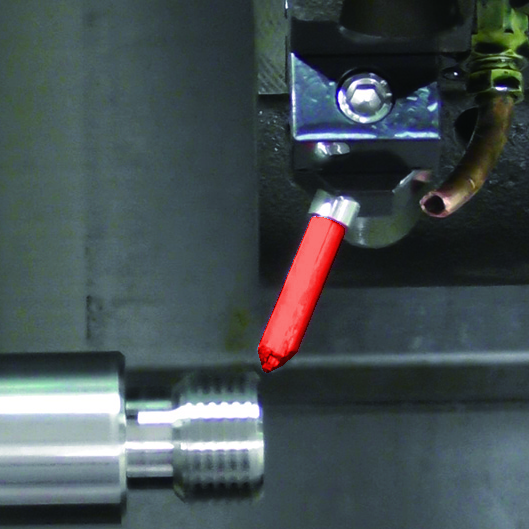
| Workpiece material: | Stainless steel |
| Thread size: | 24 x 2 mm |
| Brush (color) |
Holder | Angle (deg.) |
Dept of cut(mm) | Cutting speed (m/min) |
Feed rate (mm/rev) |
Rotational direction |
| A32-TB06 (blue) | TM-SH-S2020 | 22.5 | 0.5 | 150 | 0.1 | CW |
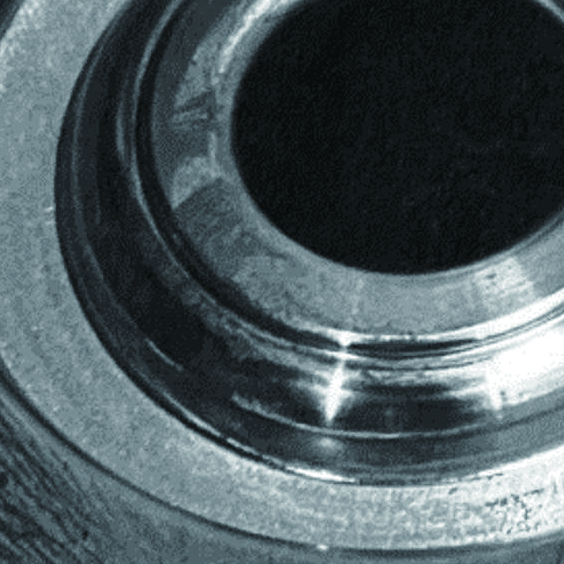
| Workpiece material | Carbon steel |
| Brush (color) |
Holder | Angle (deg.) |
Dept of cut(mm) | Spindle speed (min-1) |
| A32-CB06M (blue) | TM-SH-S2020 | 90 | 1.0 | 720 |